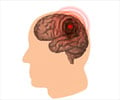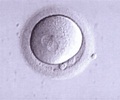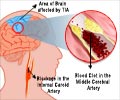Researchers at the Children's Hospital of Philadelphia have found that screening with an ultrasound machine helps prevent stroke among kids with sickle cell disease.
Researchers at the Children's Hospital of Philadelphia have found that screening with an ultrasound machine helps prevent stroke among kids with sickle cell disease, by identifying children who are then preventively treated with blood transfusions.
Childhood stroke has long been known to be a devastating complication of sickle cell disease, an inherited condition in which abnormal hemoglobin deforms red blood cells into sickle-shaped bodies that do not pass smoothly through blood vessels.Over an eight-year period, researchers found that the technique, transcranial Doppler ultrasonography (TCD), along with regular transfusions for children found to be at high risk, reduced stroke to one-tenth of the incidence found before TCD was introduced.
We studied the impact of using TCD starting in 1998, when the technique became routine at our hospital and many other centers," said Janet L. Kwiatkowski, M.D., a pediatric hematologist at The Children's Hospital of Philadelphia.
TCD is a non-invasive tool that uses ultrasound waves to measure the speed of blood flow in large vessels in the brain. An abnormally high speed is a marker of a narrowed vessel, and a sign of high risk for stroke.
After the multicenter Stroke Prevention Trial in Sickle Cell Anemia showed in 1998 the utility of TCD in detecting abnormal blood speeds and the benefit of transfusions in reducing stroke risk, the Sickle Cell Program at Children's Hospital began to routinely use TCD in screening sickle cell patients.
"When we see an abnormal TCD result, we treat the child with preventive blood transfusions, given regularly every three to four weeks," said Kwiatkowski.
Advertisement
The researchers followed 475 kids in the pre-TCD group and 530 children in the post-TCD group.
In the pre-TCD group, there were 21 patients with overt stroke, three with other neurological events and two with indeterminate events.
On contrary, the post-TCD group had two patients with overt stroke, six with other neurological events and one with an indeterminate event.
Overall, the incidence of overt stroke in the pre-TCD group was significantly higher compared to the post-TCD group-an incidence of 0.67 per 100 patient years compared to 0.06 per 100 patient years.
"The study confirmed that a program of TCD screening combined with regular transfusion therapy for children found to be at high risk of stroke is effective in preventing strokes," added Kwiatkowski.
The study has been presented at a press conference during the 50th annual meeting of the American Society of Hematology.
Source-ANI
LIN















